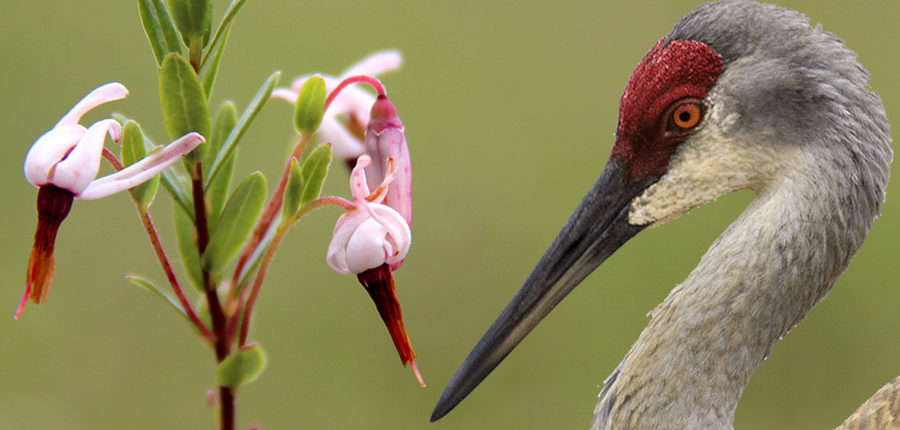Database of Semantic Shifts
in languages of the world
DatSemShift 3.0
The project was initiated in 2000 by a team of linguists inspired by Anna Zalizniak's seminal talk "Semantic Derivation in Synchrony and Diachrony: A Proposal for a 'Catalogue of Semantic Shifts'". Driven by an interest in semantic derivation, the team set out to explore regular patterns of semantic shifts that recur across languages.

Illustration to the semantic shift 'crane' -> 'cranberry'
Photo from Muskoka Lakes Farm & Winery ( https://cranberry.ca/cranberry-blossoms/ )
A semantic shift is defined as a pair of meanings, A and B, that are connected to each other through a process of semantic derivation. Such shifts can manifest themselves in two principal ways: polysemy, when both meanings coexist within a given word at a particular synchronic point — and semantic evolution, when a derived meaning eventually replaces the original meaning over time. For example, the shift from ‘to grasp’ to ‘to understand’ can appear as a case of polysemy in words such as Italian afferrare, Moksha фатямс, and Tigrinya ḥazä, where both meanings coexist. Meanwhile, the same shift is an instance of semantic evolution in words such as Latin capere ‘to take, receive, grasp’ → Italian capire ‘to understand’ or Old Russian пояти ‘to catch’ → modern Russian понять ‘to understand’.
During the course of the project, the database was expanded to include cases of lexical motivation. These are cases where the change in meaning goes beyond a single word and is accompanied by morphological derivation, including the formation of compounds.
This approach allows researchers to examine different nomination strategies across languages. For instance, the mushroom Boletus edulis is called белый гриб (literally ‘white mushroom’) in Russian, Steinpilz (literally ‘stone mushroom’) in German, and зӧкныд (literally ‘thick mushroom’) in Udmurt (there are currently over 35 different motivational patterns for Boletus edulis in the database). The inclusion of these cases is crucial not only because nomination strategies reflect the material, social, and cultural realities of various linguistic communities and historical periods, but also because they imply a continuum between cases of polysemy and morphologically derived compound terms. For instance, in French, bouche denotes both ‘mouth’ and ‘river mouth’, while in Russian and German, the latter meaning is morphologically derived (Russian уста — устье and German Mund — Mündung).
Project goals
The project aims to identify typologically significant patterns of semantic derivation, to shed light on mechanisms of linguistic conceptualisation, to reveal tendencies that are universal or characteristic of particular genetic or areal groups of languages, and to provide a semantic basis for linguistic reconstruction.
Project phases
- 2000–2012: Creation and initial populating of the database, with its online launch in 2013.
- 2018–2021 (version 2.0): Expansion of database functionality; inclusion of lexical motivation data.
- 2022–present (version 3.0): Further expansion with machine learning and NLP tools.
The database currently contains more than 9,000 semantic shifts, covering nearly 40,000 realisations from more than 2,000 languages worldwide.
Project contributors
The DatSemShift 3.0 team includes Anna Zalizniak, İlya Gruntov, Sofia Durneva, Viktoria Kaprielova, Violetta Kondratyeva, Tatyana Mikhailova, Maria Orlova, Maksim Rousseau, Elisei Rykov, and Anna Smirnitskaya.